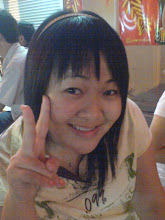Microscope are instruments designed to produce magnified visual or photographic images of object too small to be seen with the naked eye. The microscope must accomplish three tasks:
1. Producea magnified image of the specimen.
2. Separate the details in the image.
3. Render the details visible to the human eye or camera.
This group of instruments includes not only multiple-lens (compound microscope) designs with the objectives and condensers, but also very simple single lens instruments that re often hand-held, such as a loupe or magnifying glass.
Approximately in AD 1000, the first vision aid was invented (inventor unknown) called a reading stone. It was a glass sphere that magnified when laid on top of reading materials. Someone picked up a piece of transparent crystal thicker in the middle than at the edges, looked through it, and discovered that it made things look greater.

Figure 1 : Show the reading stone.
Approximately by year 1284, an Italian, Salvino D'Armate is credited with inventing the first wearable eye glasses.
 Figure 2 : Show the first wearable eye glasses. Design by Salvino D’Armate.
Figure 2 : Show the first wearable eye glasses. Design by Salvino D’Armate.
By year1590, Two Dutch eye glass makers, Hans Janssen and Zaccharias Janssen(son) experimented with multiple lenses placed in a tube. The Janssens observed that viewed objects in front of the tube appeared greatly enlarged, creating both the forerunner of the compound microscope and the telescope.
The first useful microscope was developed in the Netherlands in the early 1600s. Three different eyeglass makers have been given credit for the invention: Hans Lippershey (who also developed the first real telescope); Hans Janssen and his son, Zacharias. The most common type of microscope and the first to be invented is the optical microscope.
The earliest simple microscope was merely a tube with a plate for the object at one end and at the other, a lens which gave a magnification less than ten diameters – ten times the actual size. These excited general wonder when used to view fleas or tiny creeping things and so were dubbed “flea glasses”.
 Figure 3 : Show The Jason Compound Microscope.
Figure 3 : Show The Jason Compound Microscope.

Figure 4 : Show the simple compound microscope invented by British microsopist Robert Hooke sometimes in year 1660s.
Simple Story To Understand The Story For Microscope
http://www.az-microscope.on.ca/history.htm
http://www.einsteins-emporium.com/micro/sm101.htm
 Figure 2 : Show the first wearable eye glasses. Design by Salvino D’Armate.
Figure 2 : Show the first wearable eye glasses. Design by Salvino D’Armate.By year1590, Two Dutch eye glass makers, Hans Janssen and Zaccharias Janssen(son) experimented with multiple lenses placed in a tube. The Janssens observed that viewed objects in front of the tube appeared greatly enlarged, creating both the forerunner of the compound microscope and the telescope.
The first useful microscope was developed in the Netherlands in the early 1600s. Three different eyeglass makers have been given credit for the invention: Hans Lippershey (who also developed the first real telescope); Hans Janssen and his son, Zacharias. The most common type of microscope and the first to be invented is the optical microscope.
The earliest simple microscope was merely a tube with a plate for the object at one end and at the other, a lens which gave a magnification less than ten diameters – ten times the actual size. These excited general wonder when used to view fleas or tiny creeping things and so were dubbed “flea glasses”.
 Figure 3 : Show The Jason Compound Microscope.
Figure 3 : Show The Jason Compound Microscope.
Figure 4 : Show the simple compound microscope invented by British microsopist Robert Hooke sometimes in year 1660s.
Simple Story To Understand The Story For Microscope
http://www.az-microscope.on.ca/history.htm
http://www.einsteins-emporium.com/micro/sm101.htm
